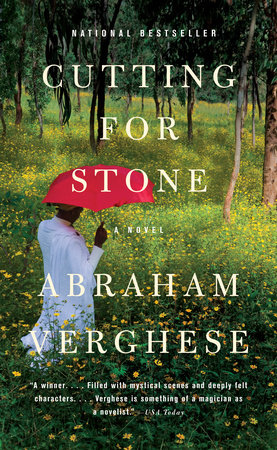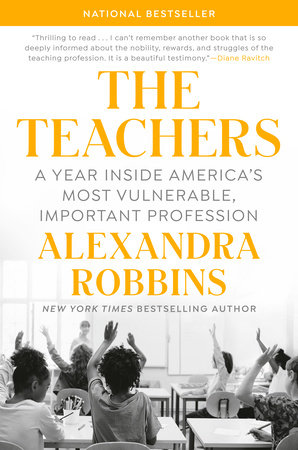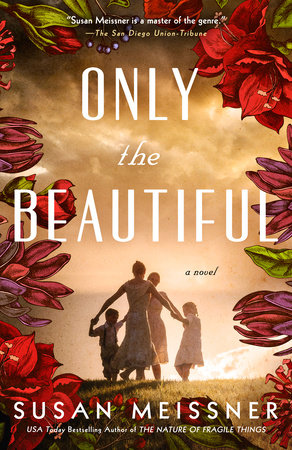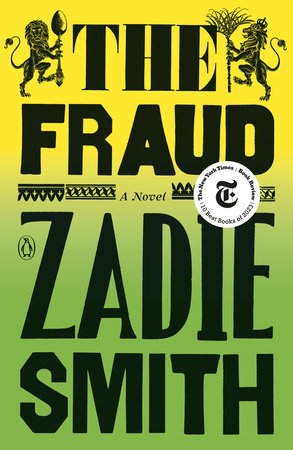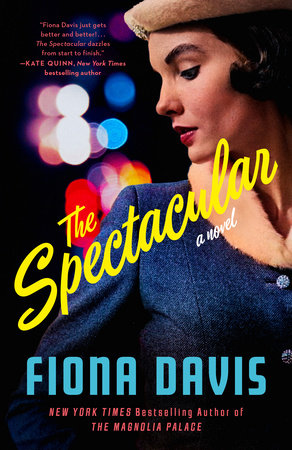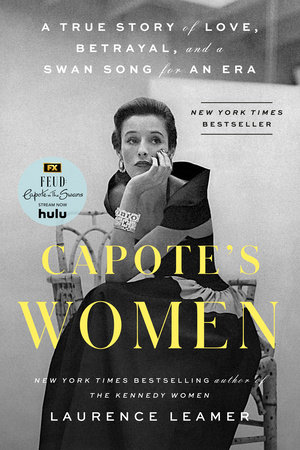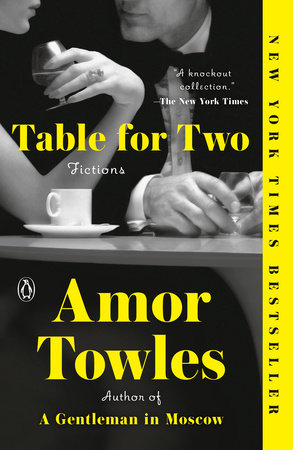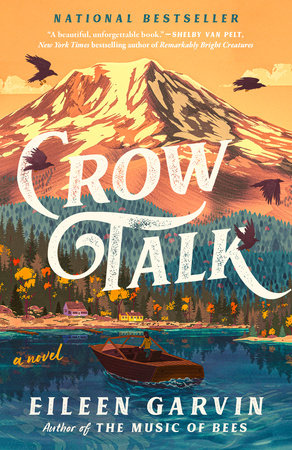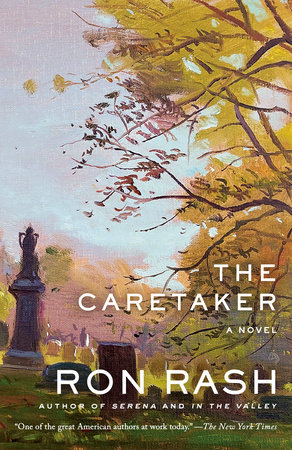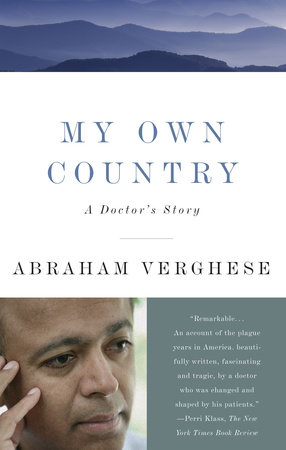Q: Your previous two books are non-fiction, but you’ve said that you have always thought of
yourself as a fiction writer first. How so?
A: Fiction is truly my first love. To paraphrase Dorothy Allison, fiction is the great lie that tells the
truth about how the world really lives. It is why in teaching medical students I use Tolstoy’s The
Death of Ivan Ilych to teach about end-of-life, and Bastard out of Carolina to help students really understand child abuse. A textbook rarely gives them the kind of truth or understanding achieved in
the best fiction.
One of my first published short stories was “Lilacs,” in which the protagonist has HIV. Its
appearance in The New Yorker in 1991 was a part of what led to my contract to write My Own Country,
a memoir of my years of caring for persons with HIV in rural Tennessee. While writing that book
I found myself living through an intense personal story of friendship and loss that led to a second
non-fiction book, The Tennis Partner. But after that, I passed up on an offer to write a third non-fiction
book. I was keen to get back to fiction, to explore that kind of truth.
Q: In 1990, while practicing medicine, you decided to attend the Iowa Writers’ Workshop and obtain a degree in Fine Arts. What led you to go back to school—particularly for creative writing—while you were in the middle of a successful career as a doctor?
A: At the time I was living in Johnson City, Tennessee, working at a small medical school as an internist
and infectious diseases specialist. Between ‘85 and ‘90, we began to see many HIV-infected
persons at a time when the pundits said AIDS was a big-city disease, and we’d never see it in our
small communities. Soon we had close to 100 patients in a town of 50,000, a mystery I explained in
My Own Country. It was an intense, sad, heartbreaking period because we had no real therapy and
lots of prejudice and hatred, but also lots of courage and heroism. Not having anything by way of
medicine to offer my patients, I began to visit with them at times in their homes. That is when I
found that even when I had nothing to offer, I had everything to offer: It was the distinction between
healing and curing (and the cure was what all of us in Western medicine were obsessed with). I realized
that I could heal when I could not cure, meaning that my presence, my interest and support,
could help the patient and the family come to terms with the illness, come to terms with death.
But by the fifth year of this practice, with little in the way of help, I was getting burned out.
If I wanted to stay in the war against AIDS—and I did—I needed to pace myself, to take a break. I
had been writing short stories and essays as a way of keeping sane during those intense days. So I
decided I would apply to the Iowa Writers’ Workshop, send in my two stories, and if they took me,
I would go. If they didn’t take me, I was still determined to take a break and support my family by
working in emergency rooms.
Well, Iowa took me, and I wound up cashing in my 401K plan and giving up my tenured position to drive out there with my wife and two young children. As I look back, I think it was a very selfish thing to put my family through, but it was an act of self-preservation, too—I felt I would implode if I didn’t take a break.
In Iowa, I worked in the University HIV clinic once a week. Other than that and the workshop
that met weekly, my time was gloriously free to read and write. Given my background, this was precious
time—I didn’t think I would ever get time like that again (and I haven’t)—so I worked very hard
for the year and a half it took me to finish. The bills piled up, and when I was done, I needed to get a
regular job again, which is how I landed up in El Paso at Texas Tech’s teaching hospital there. I chose
a place well off the main academic trail because I thought that my nights and weekends would be
mine, no grants to write. That turned out to be true and my first two books were written there.
Q: Was there a single idea behind or genesis for Cutting for Stone?
A: My ambition as a writer was to tell a great story, an old-fashioned, truth-telling story. But beyond
that, my single goal was to portray an aspect of medicine that gets buried in the way television depicts the practice: I wanted the reader to see how entering medicine was a passionate quest, a romantic pursuit, a spiritual calling, a privileged yet hazardous undertaking. It’s a view of medicine I don’t think too many young people see in the West because, frankly, in the sterile hallways of modern medical-industrial complexes where physicians and nurses are hunkered down behind computer monitors, and patients are whisked off here and there for this and that test, that side of medicine gets lost.
So I began with the image of a mission hospital in Africa, redolent with Dettol, the antiseptic of choice of the tropics; I wanted to portray a place so basic, so unadorned, that nothing separates doctor and patient, no layers of paperwork, technology or specialists, no disguising of the nature of the patient’s experience or the raw physician experience. It’s a setting where the nature of the suffering, the fiduciary responsibility and moral obligation to the patient and society are no longer abstract terms. In that setting I wanted to put very human, fallible characters—people like Sister Mary Joseph Praise and Thomas Stone. I wanted the whole novel to be of medicine, populated by people in medicine, the way Zola’s novels are of Paris.
Q: Where does the title “Cutting for Stone” come from?
A: There is a line in the Hippocratic Oath that says: . . . I will not cut for stone, even for patients in whom
the disease is manifest . . . It stems from the days when bladder stones were epidemic, a cause of great
suffering, probably from bad water and who knows what else. Adults and children suffered so much
with these—and died prematurely of infection and kidney failure. There were itinerant stone cutters—
lithologists—who could cut either into the bladder or the perineum and get the stone out, but
because they cleaned the knife by wiping it on their blood-stiffened surgical aprons, patients usually
died of infection the next day. Hence the proscription, “thou shall not cut for stone.”
It has always seemed to me a curious thing to say when we recite the oath in this day and age.
But I love the Hippocratic Oath (or oaths, because its origins and authorship are far from clear), and
always try to attend medical school commencement. When the new graduates stand and take the
oath, all the physicians in the room are invited to rise and retake the oath. You see many physician
parents and physician siblings standing as their son or daughter or brother or sister takes the oath. It
chokes me up every time. Not only am I renewing my faith, but I am bursting with pride in seeing my
students graduate—another part of the oath is “to teach them this art, if they desire to learn it; to give
a share of precepts and oral instruction and all the other learning to my children and to the children
of those who instructed me and to pupils who have signed the covenant and have taken an oath according to the medical law.”
How does all this relate to my novel? It isn’t just that the main characters have the surname ‘Stone’; I was hoping the phrase would resonate for the reader just as it does for me, and that it would have several levels of meaning in the context of the narrative.
Q: Each of the characters in this novel is drawn to medicine in different ways and for different
personal reasons. What drew you to medicine?
A: I was the middle of three sons of Indian parents who taught college physics. My brothers had a precocious ability with numbers, while I had no head for math—or much else in the curriculum. For middle-class Indian parents only three professions exist: medicine, engineering, and law. My older brother announced he was going to be an engineer, which delighted my parents. I felt obliged to proclaim that I intended to be a doctor. I figured that my propensity to fall and bleed, my unseemly interest in witnessing chickens and sheep being slaughtered for the kitchen, and my fascination with watching animals give birth could now be viewed as a form of scholarship. This was my false call to medicine.
My true call to medicine came in the form of a book. By the time I picked up Of Human Bondage by Somerset Maugham I had already read Lolita and Lady Chatterley’s Lover. I was twelve, I think. Maugham’s protagonist, Philip, sets out for Paris to become an artist. Money is tight, and he lives on the brink of starvation, and finally finds he does not have the talent. He is crushed and disappointed but also relieved to have discovered what is not to be his calling. He returns to London and enters medical school. When after years of slogging away he enters the outpatient clinic for the first time, he realizes he has made the right choice. The particular lines that stayed with me, that have haunted me, were: “There was humanity there in the rough, the materials the artist worked on; and Philip felt a curious thrill when it occurred to him that he was in the position of the artist . . .”
The phrase "humanity there in the rough" spoke directly to my twelve-year-old mind. I took it to mean that if one had no God-given talent to be an artist (or mathematician), one could aspire to be a doctor, perhaps even a good one. The beauty of medicine is that it is proletarian, and its prime prerequisite is that you have an interest in humanity in the rough.
Many of us also come to medicine because we are wounded in some way. Thomas Stone is
a great example, but so is Marion Stone.
Q: How has being a doctor influenced you as a writer and vice versa? Do you think practicing one has helped you practice the other?
A: I think sometimes we make too much of the doctor-writer business—it’s in danger of becoming a cliché. I’ve not put MD behind my name on any books, except one that was called “Infections in Nursing Home and Long Term Care Facilities.” Unless I’m writing a diet book or a textbook like the one above, the doctoring seems kind of irrelevant—the writing has to stand on its own, don’t you think? Or else every writer should put their AB, and JD, and MFA and whatnot after their name on the title.
That said, I confess that my love of medicine feeds this book and much of my other writing. There are lots of parallels between writing and medicine. I remember hearing the aphorism “God is in the details” both in medical school and also at the Writers’ Workshop. When we see a patient we take a ‘history’—the word “story” is in there. As a consultant, when I see a patient whom others have seen before me, if I can shed light on the problem it is often because the particular patient story resonates with my repertoire of stories and so I know where it is heading. I have given Ghosh—the internal medicine specialist at Cutting for Stone’s Missing hospital—some of these attributes.
Internal medicine, which is also my field, is so much about details, about tying together disparate
clues to come up with a unifying diagnosis and about close observation. Medicine is full of wonderful aphorisms which I love, like, “beware of the woman with the glass eye and the big liver” (which refers to the fact that melanoma of the eye, a common cause for an eye to be removed, can be followed many years later with liver metastases). And as for metaphors, to list just a few fruit metaphors, we have the strawberry tongue of scarlet fever (which becomes the raspberry tongue the next day), and the cherry red spot in the retina, the peau d’orange appearance of the breast, the melon seed body of TB, the currant jelly stools of intussusception . . . .(It is very revealing that modern medicine with so many new diseases—AIDS, SARS, Lyme—has not to my knowledge in the last fifty years come up with a metaphor as colorful as the mulberry molar or the cracked-pot skull or the saber-shinned tibia. It speaks of a disturbing atrophy of the imagination, an obsession with the science at the expense of the art. If I hear the word ‘evidence-based’ medicine any more, I think I’ll be sick.)
So, to answer your question, being in medicine is helpful, particularly for the novel I chose to write. But it provides no short cuts. Writing is still hard, and the real art is in the revision, the real talent is in having the stamina, in being able to delay gratification over the many years it takes to get it right.
Q: Though you confront serious issues in the novel, there is much humor in it, too. Was it a conscious choice to bring humor in, and if so, why? Levity finds its way into many of the medical
scenes (Ghosh performing a vasectomy, for example); was there an element of wanting to make
medicine less intimidating?
A: The humor surprised me. I didn’t set out to be funny or to inject comedy into the novel. And that’s probably a good thing, because it’s difficult to deliberately try to write humorous stuff.
That said, there are many occasions for side-splitting laughter in medicine, but one has to be careful that the patient never construes this as our being light-hearted about his or her suffering. I’ve drawn on some of my most memorable professors, the ones who told the bawdiest stories that were therefore unforgettable. I so much want to tell my students these stories, but common sense stops me. We’ve become so sensitive.
I once, in print, called the coronary artery bypass operation the great blow-job of American medicine: lucrative for one, satisfying for the other, but biologically a dead end. Many were not amused, let me tell you.
Q: The question “What treatment is administered in an emergency by ear?” is important to many of the characters in this novel. Perhaps you can tell us the correct answer, and also tell us how the answer informs the book.
A: The answer to this trick question that recurs in the book is of course, ‘words of comfort.’ It’s the sort of thing examiners like to ask in the British system, in the places that still have the viva voce—the terrifying oral exams—and that still test physicians on real patients, not make-believe patients. Alas, in America, we are getting so ‘virtual’ that board-certified internists become board-certified by taking a multiple-choice examination. No one really tests that they can feel an enlarged spleen, or diagnose and put together physical signs at the bedside.
‘Words of comfort’ relate to a sense I have that the patient in America is becoming invisible. The patient is unseen and unheard. The patient is presented to me by the intern and resident team in a conference room far away from where the patient lies. The patient’s illness has been translated into binary signals stored in the computer. When we do go to the bedside to make rounds, often physicians are no longer at ease. It is as if the patient in the bed is merely an icon for the real patient, who exists in the computer. But none of these tests done at a distance substitute for being with the patient, for the ‘words of comfort’ aspect of treatment.
When one knows how to look, the patient’s body reveals many things—it is an illuminated manuscript. I am no Luddite and have no illusions that the kind of exam I do is superior to a CAT scan or MRI. But a skilled exam can do two things: first, it can allow us to practice cost-effective medicine by generating a reasonable diagnosis at the bedside and ordering selective tests, rather than the shotgun approach, where we tick off everything that seems remotely interesting on the lab and radiology slips. Secondly, the skilled exam done with courtesy and done well conveys something important about caring and about professionalism to the patient; indeed it is a key component to building a good physician-patient relationship. Particularly in patients with chronic illness, where there are few dramatic interventions that one can prescribe, a good physician-patient relationship can support the patient through the ups and downs of an illness; the physician’s presence, the ‘words of comfort’ aspect, can be therapeutic in itself.
The fact that patients with chronic illness increasingly seek the attention of naturopaths, refelexologists, acupuncturists, and others has a lot to do with the fact that these individuals will spend time and put hands on the patient, where the physician does that infrequently or in a cursory fashion. When your head is wrapped around the latest gene-array test or ‘evidence-based medicine’ (as though what preceded it was witchcraft), then you might underestimate the importance of ‘words of comfort.’
Q: You bring Ethiopia to life so vividly—its contradictions of beauty and poverty. Addis Ababa
(and Missing Hospital) is so much a part of each character though some come to it from other places or leave it for other places. Why did you decide to set much of this novel there? And how do you think the atmosphere of the place affected your life?
A: Even in this era of the visual, I think a novel can bring the feel of a place out better than almost any vehicle. It’s another thing that Somerset Maugham did so well. The few images one sees of Ethiopia are uniformly negative, about war and poverty. I wanted to depict my love for that land and its people, for their incredible beauty and grace and their wonderful character.
I wanted also to convey the loss many felt when the old order gave way to the new. Ethiopia had the blight of being ruled by a man named Mengistu for too many years, a man propped up by Russia and Cuba. My medical school education was actually interrupted when Mengistu came to power and the emperor went to jail. As an expatriate, I had to leave. It was my moment of loss. Many of my medical schoolmates became guerilla fighters, trying to unseat the government. Some died in the struggle. One of them fought for over twenty years, and his forces finally toppled the dictator. Meles Zenaweis, now Prime Minister of Ethiopia, was a year behind me in medical school. I went through hard times because of the disruption, but I eventually finished my medical education in India. But what I went through was nothing compared to what others went through—they were willing to die for their cause.
Q: At the heart of this novel there is a love story—that of Sister Mary Joseph Praise and Dr.
Thomas Stone—which informs almost everything that happens to each character in the book,
and yet one of these characters is dead and one has not been seen by anyone for decades. How did you conceive of their relationship, and how do they exert such force on the novel even though neither is present for the majority of it?
A: Love to me has a quality to it like a trip wire—hence we ‘fall’ in love, instead of simply ‘arriving’
to love. Love comes down to a set of wills trying to match and sometimes mismatching in spectacular fashion; I think all love is unrequited unless we have a clone of ourselves and even then the love
is unrequited. In my day job I see all too often that people’s appreciation of the existence of love, of
the meaning of love, or of the idea that the meaning of life turns out to be love—all these are arrived
at too late, when the love is long lost, or arrived at just before the moment of death. Perhaps what
love seeks is not reciprocity but redemption, the sense that who you are is worthy and was always
worthy of love.
Thomas Stone and Sister Mary Joseph Praise’s love is hidden even from them by the strict boundaries of their chosen professions and then even more so by their professional relationships. It takes a miracle or a catastrophe or both for it to be revealed to them and to others. I suppose it makes for an unusual love story, one that never really happens in real time, one where possession is out of the question—and yet it is a love story that has the power to drive every event in the book directly or indirectly.
Q: What is next for you? Do you anticipate both practicing medicine and writing fiction and nonfiction in the future? Anything in the works right now?
A: As to what is next: I have a collection of short stories, most of them published in various magazines,
but a few that are yet to come. But after a little break, I’d love to embark on the next novel. I learned invaluable lessons about form, structure, stamina, and pacing in the course of writing this one—painful lessons that should not go to waste. I’ve also been steadily doing shorter things, op-ed pieces for the Wall Street Journal and the New York Times Magazine all through the years I wrote the novel. I’d like to do that more regularly.
I’d like to practice medicine till my last breath without actually collapsing on the patient—that would be bad form. I hope my mind and body will allow this. Being a physician is central to my life, truly my refuge, and so I don’t think I can give it up. If it’s a calling, then you can’t be a dilettante and wander off because you think something else calls. My writing emanates from a very personal stance which in my case is wrapped up in the privilege of practicing medicine. I recognize that I have a worldview colored by that fact. Still, what I think matters most is the words on the page, not the credentials or vocation of the writer.
